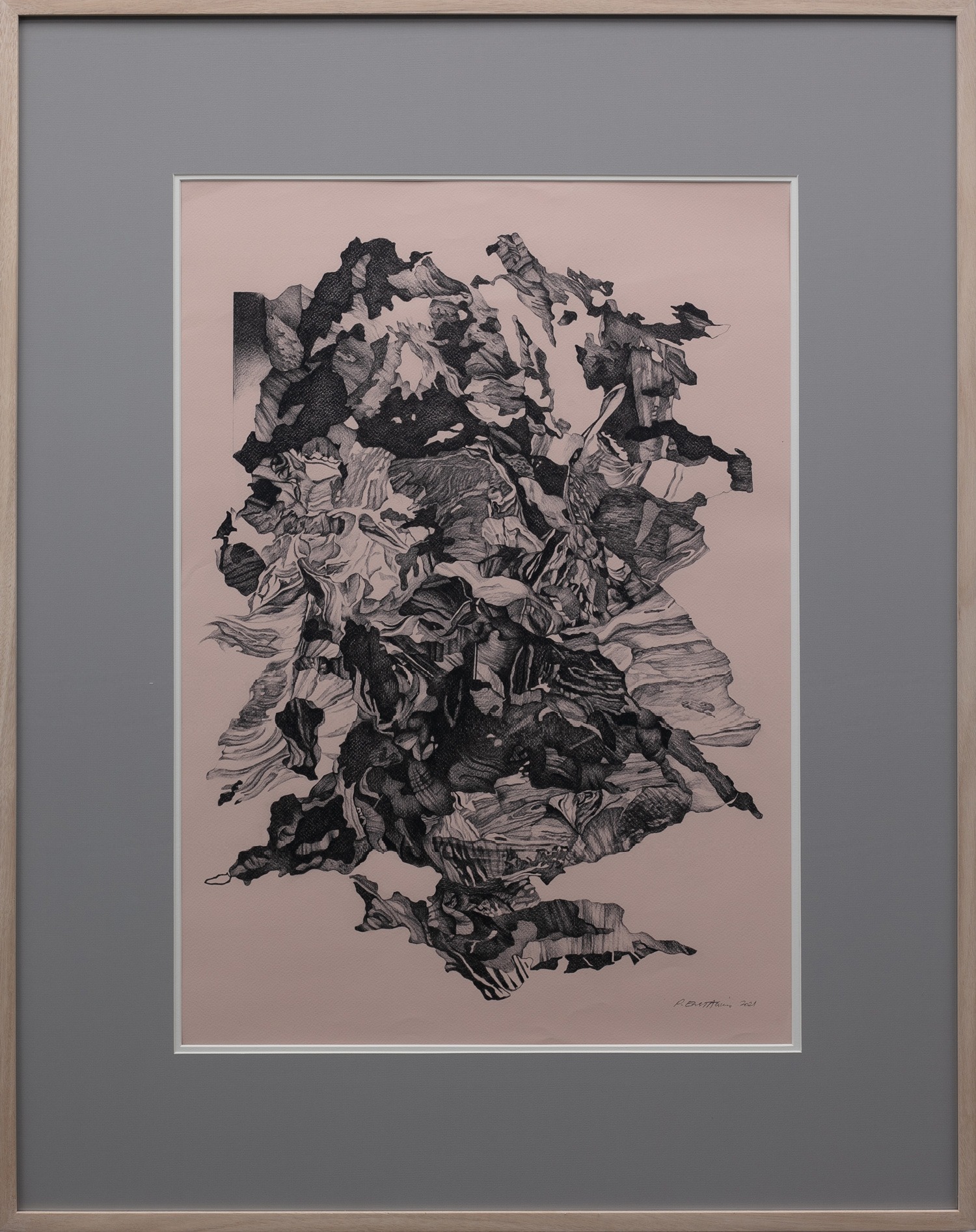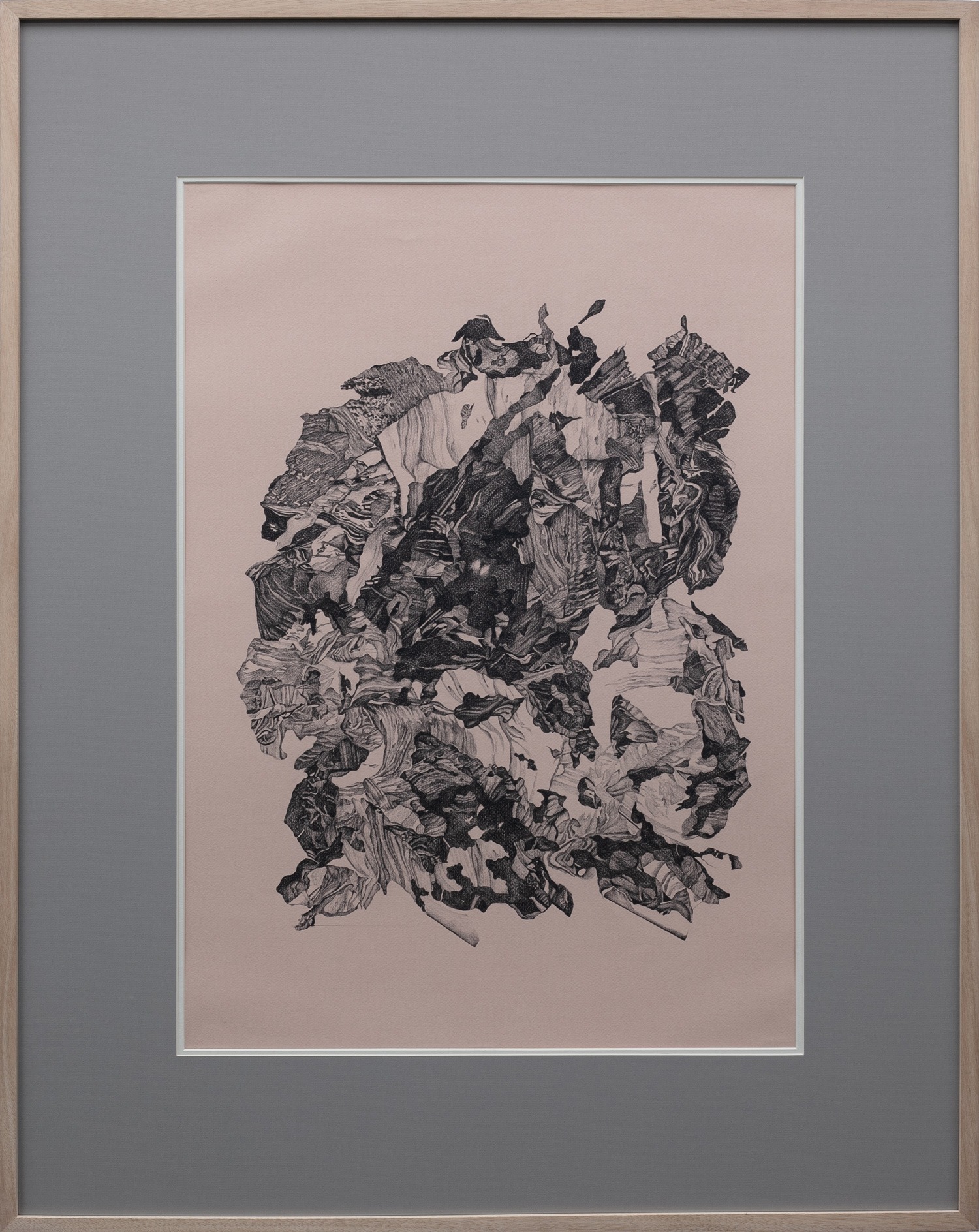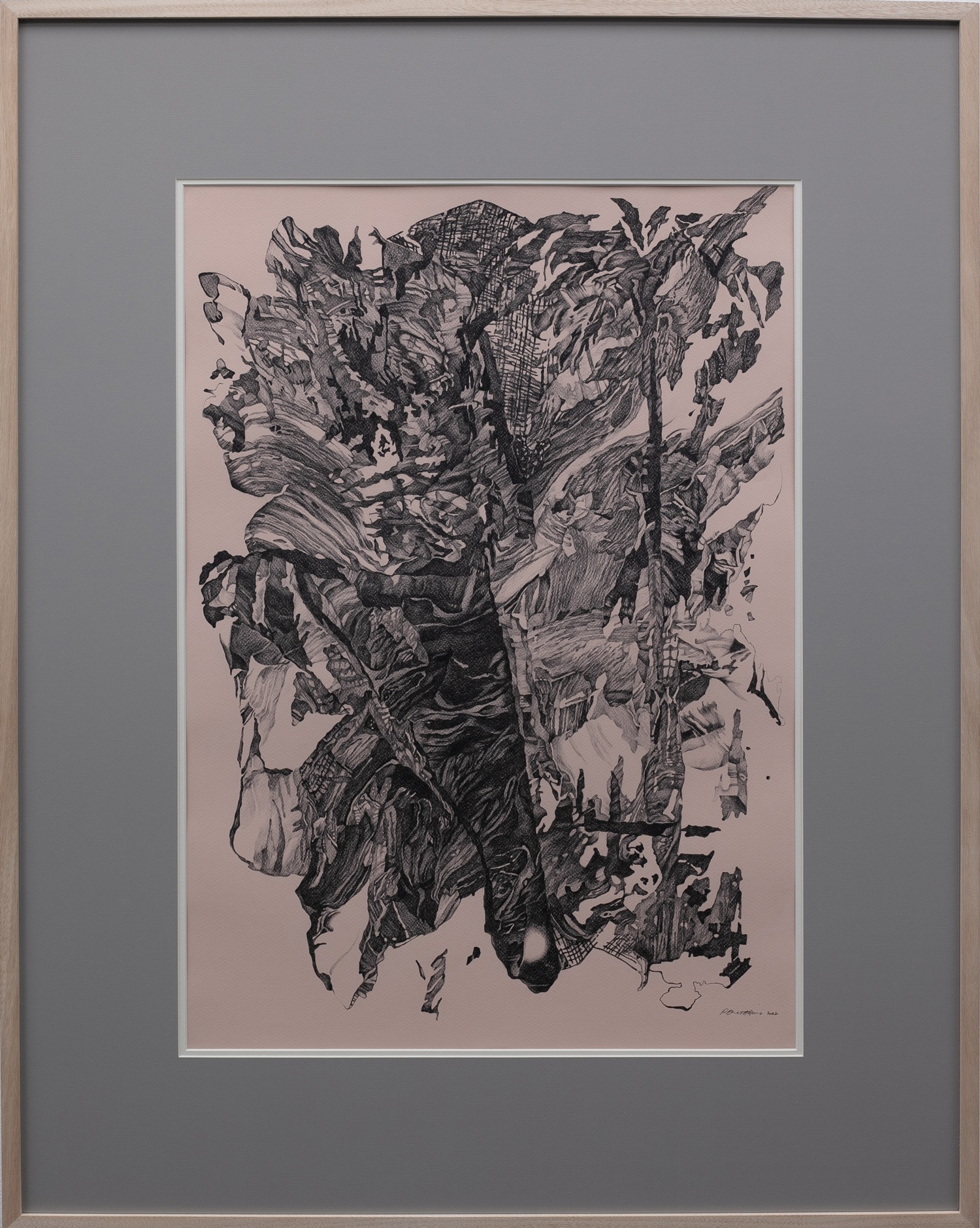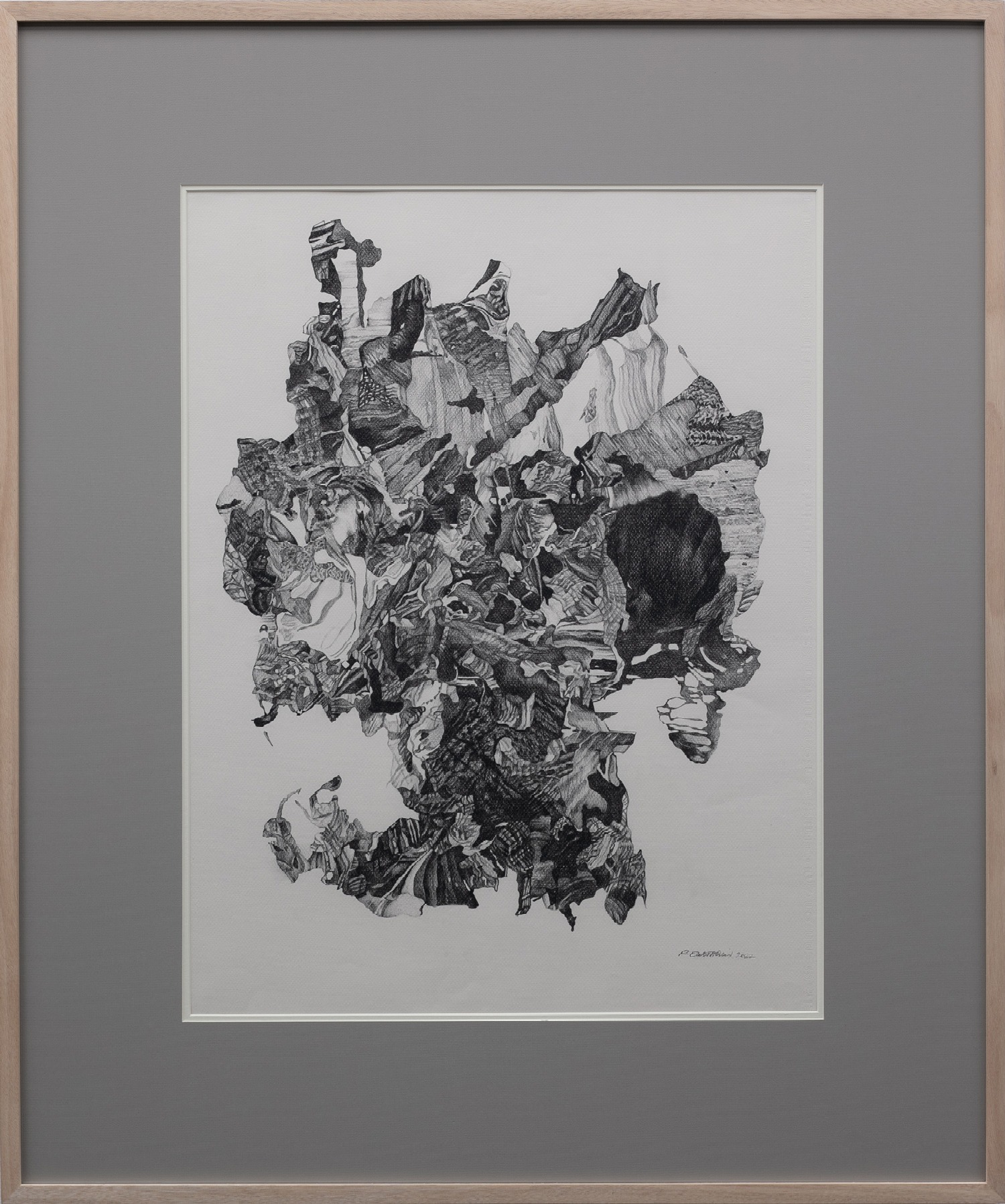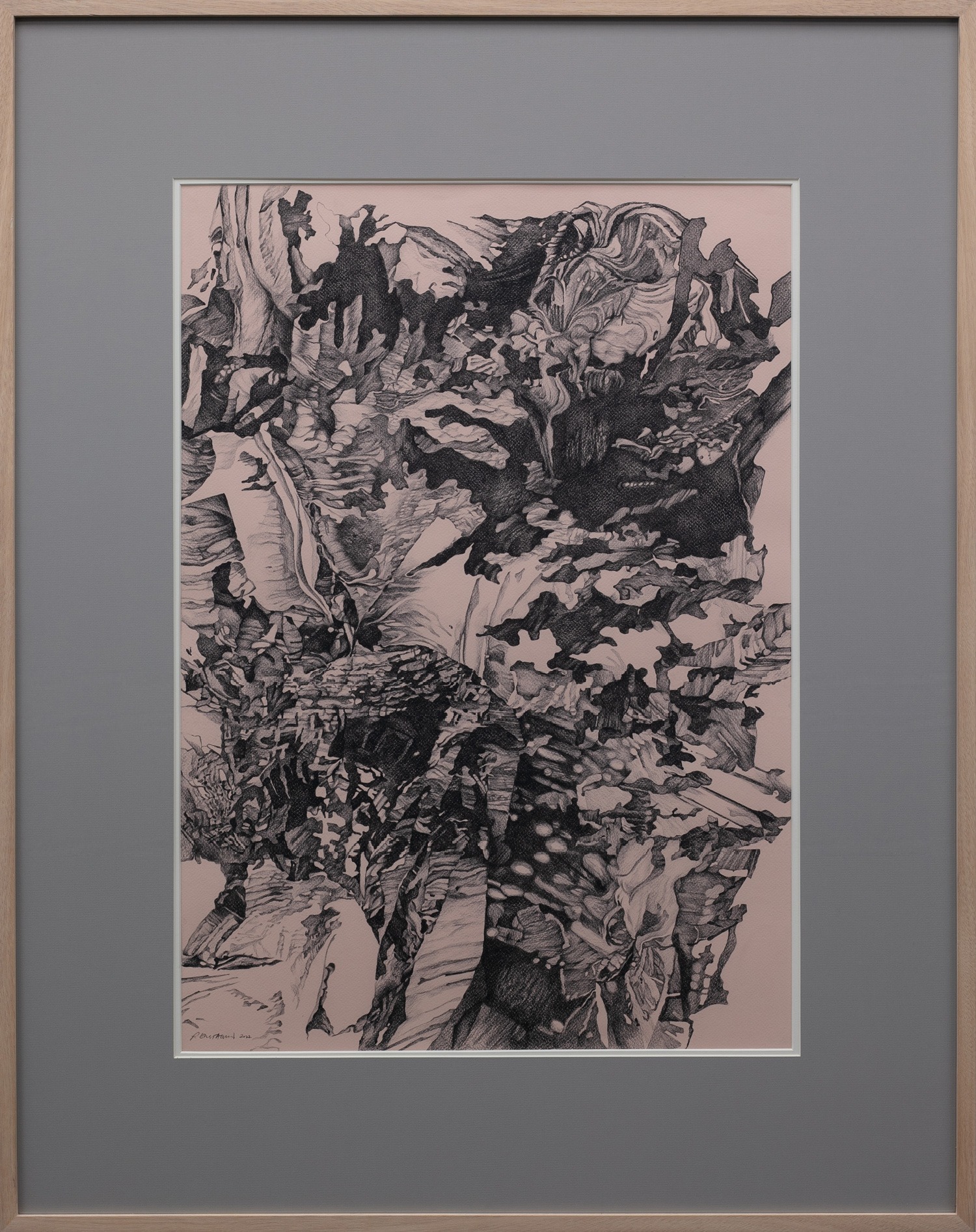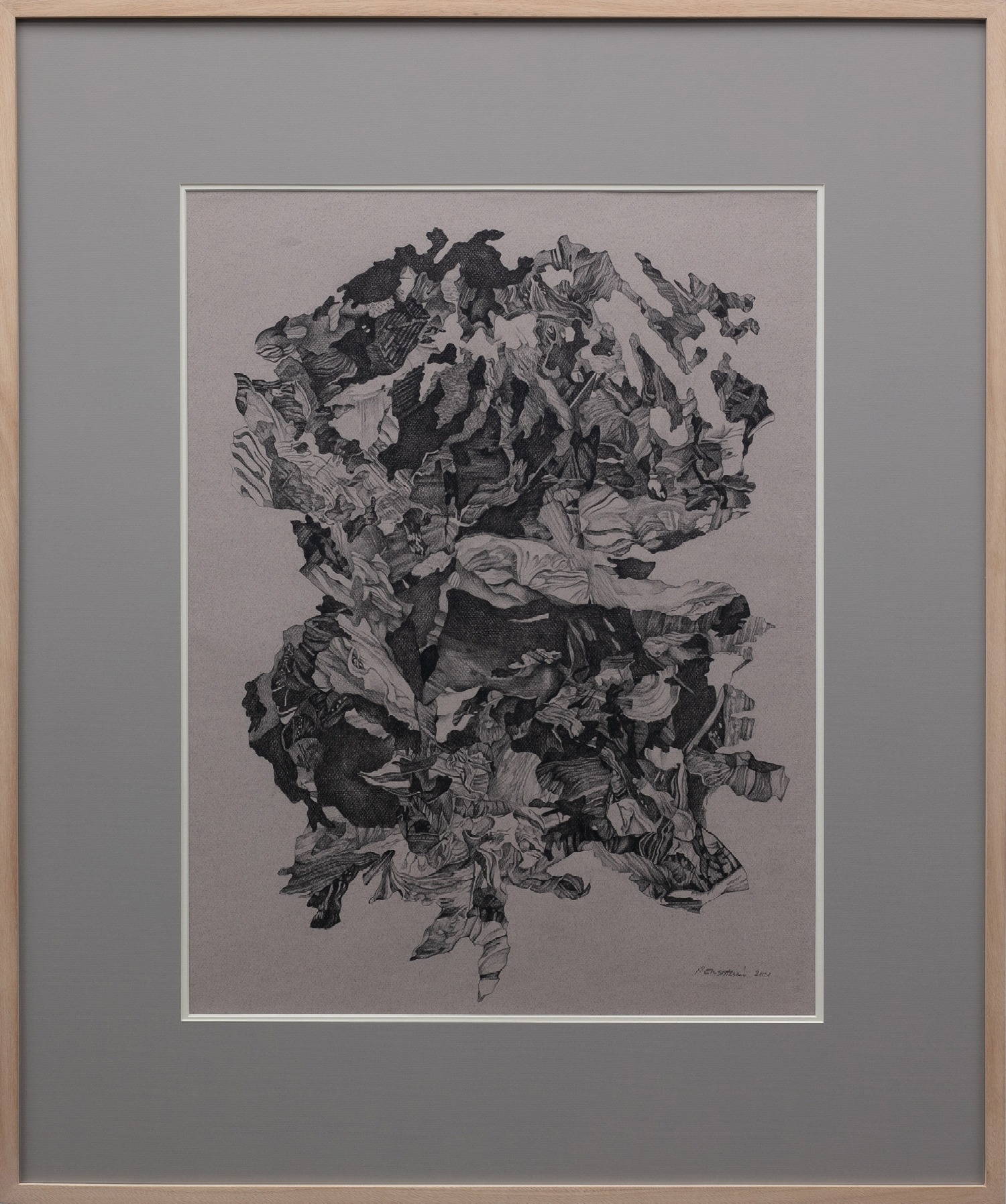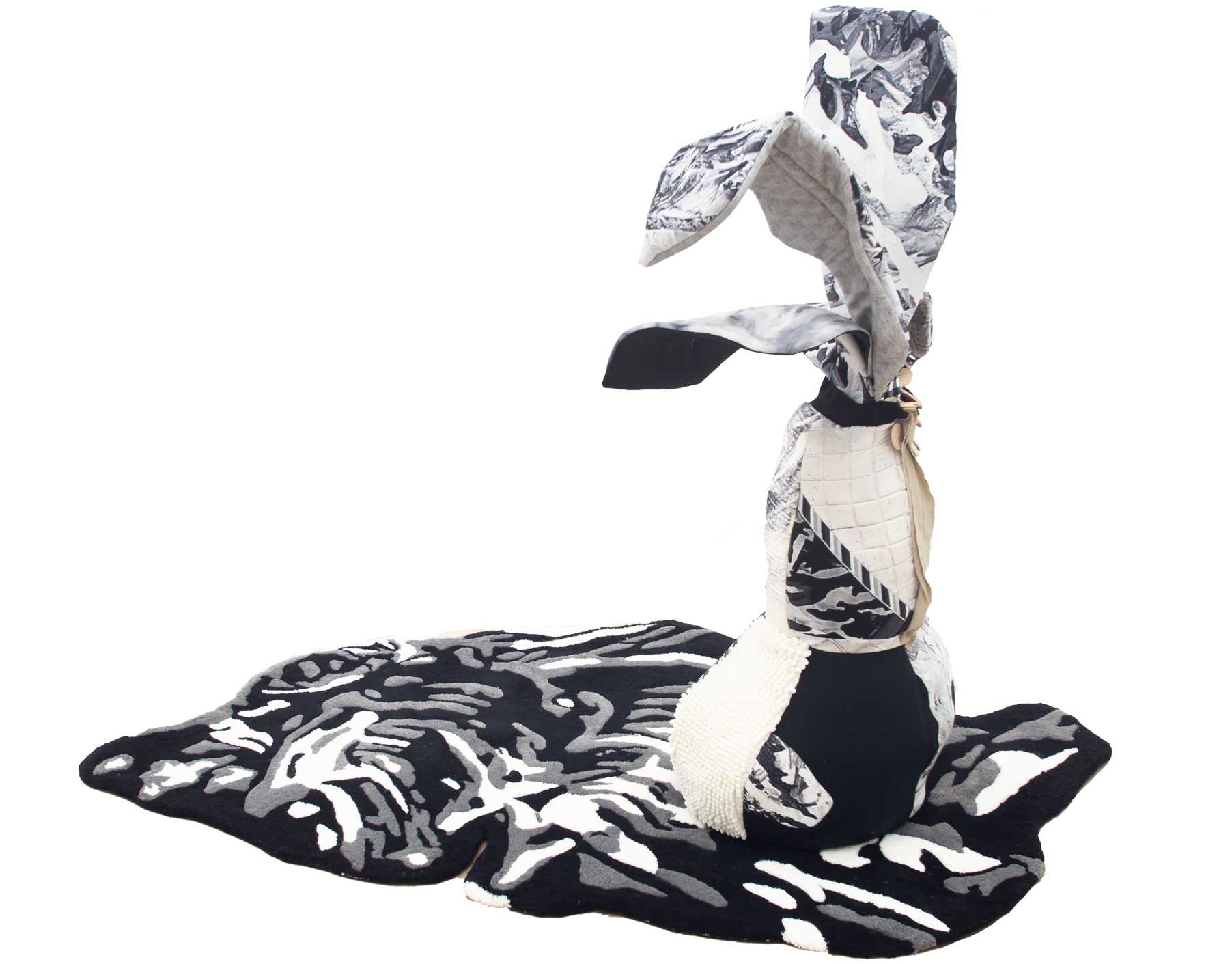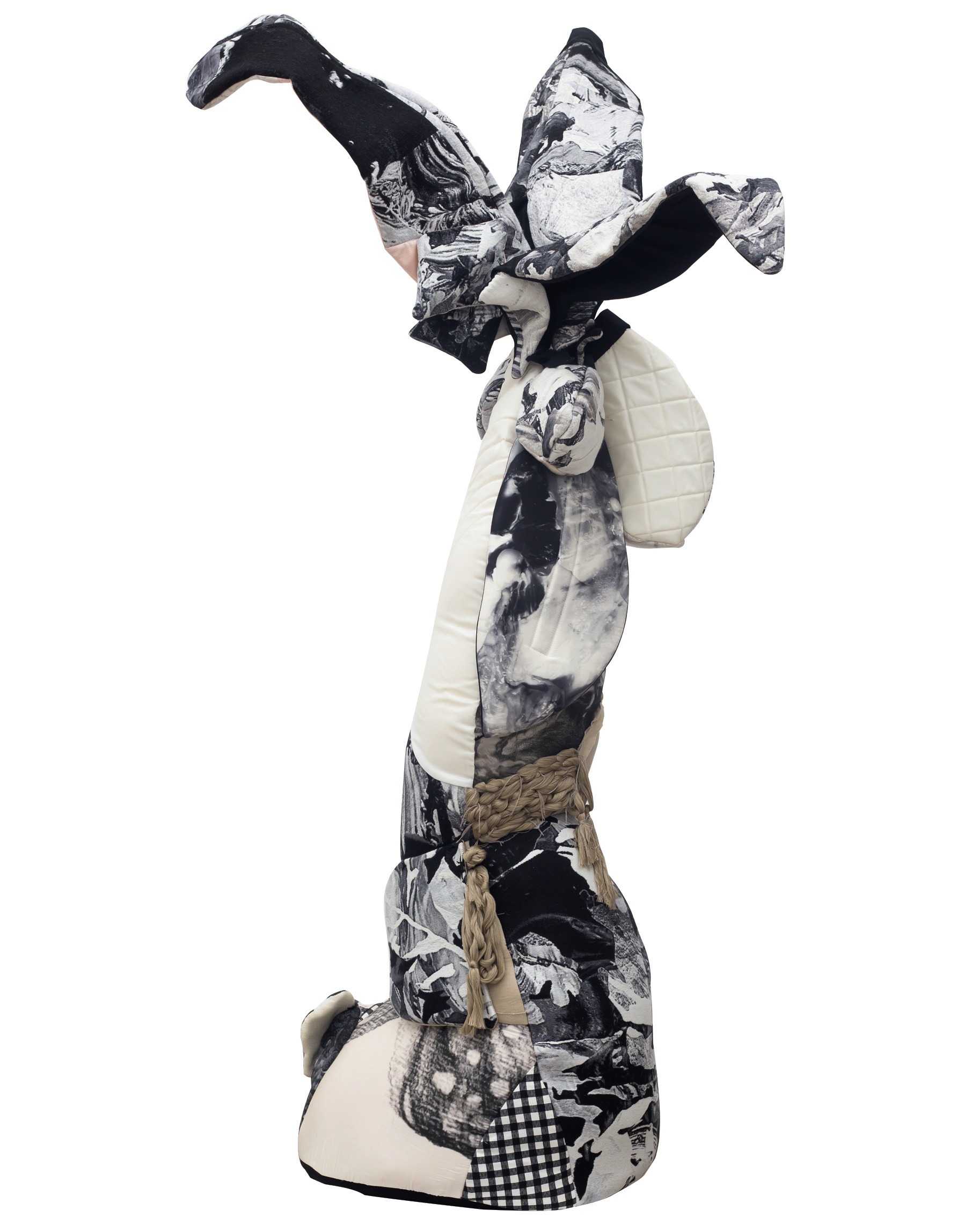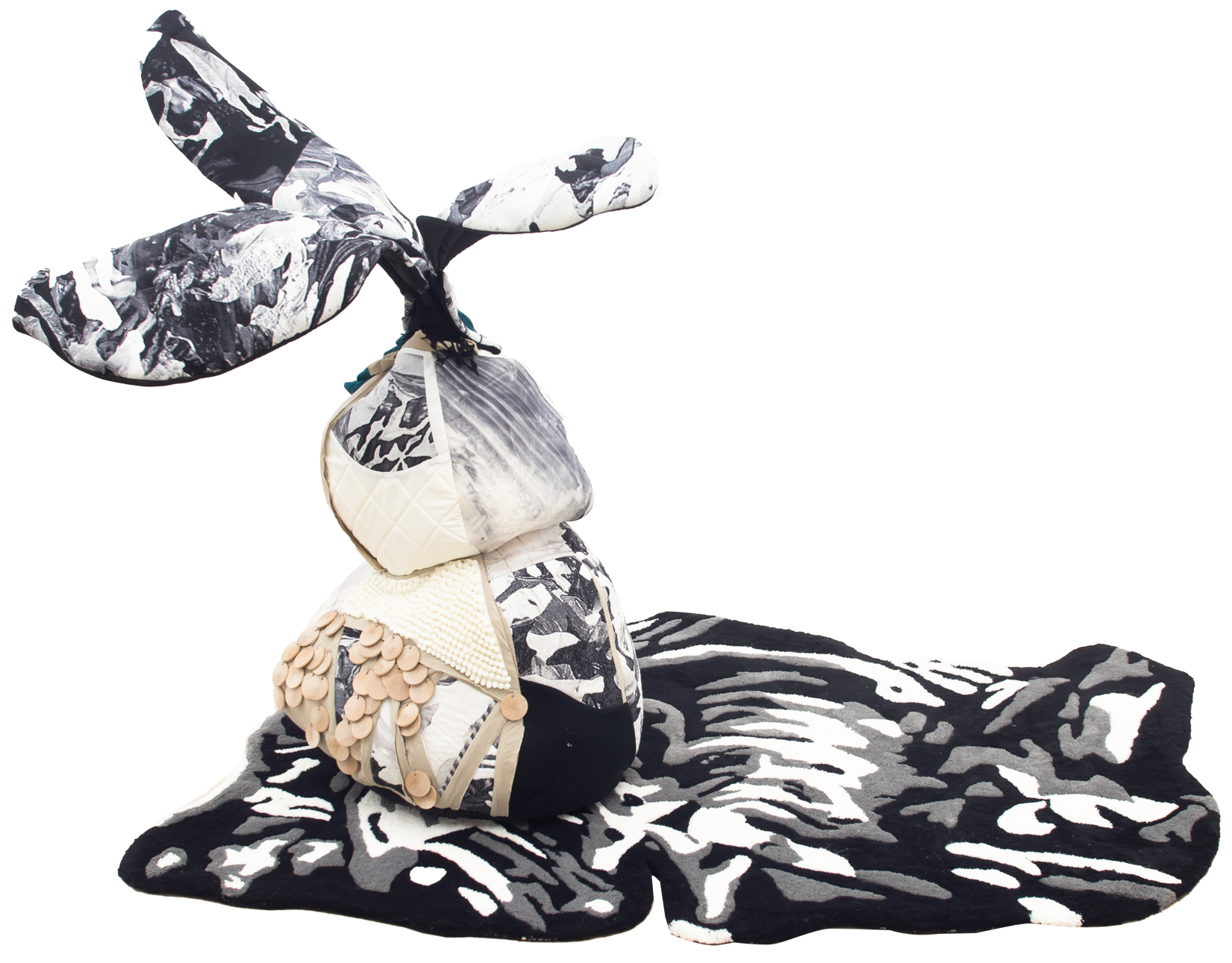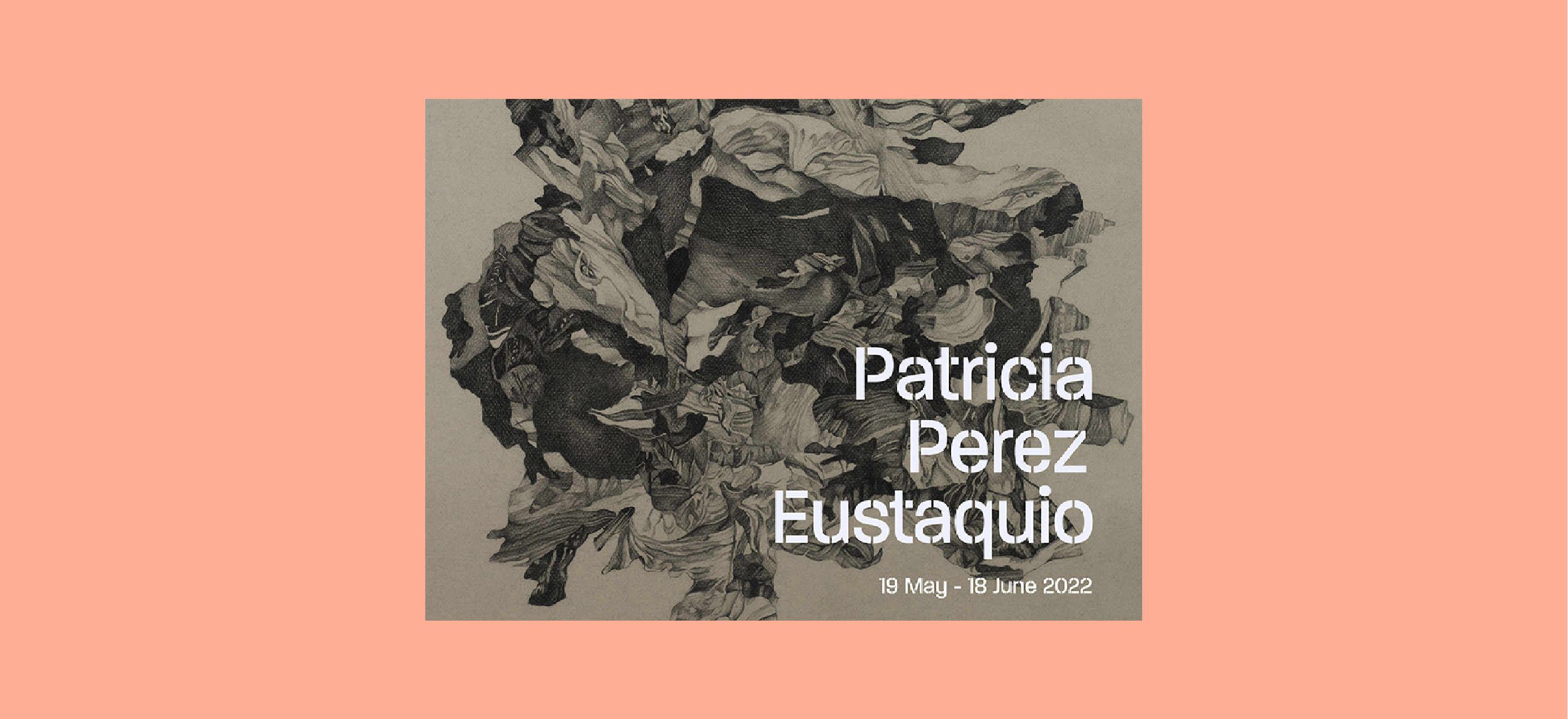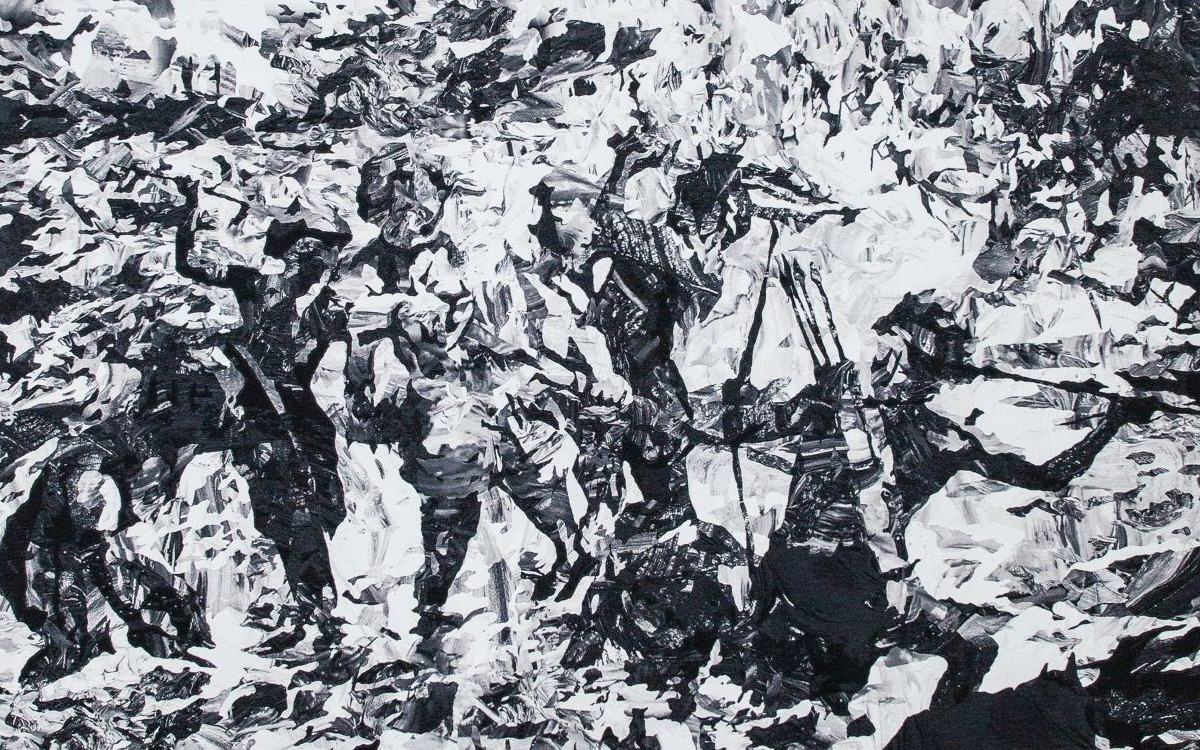
About
In an exhibition that gathers a new series of graphite drawings and soft fabric sculptures, Patricia Perez Eustaquio continues to challenge established ideas of value and form in the process of translation from one art to another.
The six works rendered in graphite feature sketches of digitally manipulated fragments stemming from an ongoing project of loom tapestries based on canonical paintings. It is the first time the artist uses taupe, salmon, and grey colored paper for her works, an experiment born out of necessity during a pandemic. Each drawing is maddeningly detailed and dense in what it manually reproduces and what it redacts, parts are left blank on closer inspection. She says in an email exchange, "The art world circus had become too much that we felt compelled to put so many words into the gaps that artworks provide us to think and feel beyond what is simply obvious. Perhaps what I've done with the drawings reflects this closer and closer look at things until they explode into a blur in front of our eyes, with my eyes so close to the image.”
The geographies within the drawings do seem to enfold into themselves and it is their outlines that tend to stand out more at first look. They seem like barbed cutouts or possibly grafted glaciers on the loose, enormous, and itinerant on paper. Shaping and cutting are distinct features found in Eustaquio’s practice: hand-cut amorphous aluminum sheets, hardened lace, black wicker on a body mannequin, and mirror chips on a boulder to name a few. Assumptions on form, function, and value are resisted but not dismissed rather they are reinscribed within the work. The artist takes the translated fragments from seminal artworks heavy with the burden of the past into the heaviness of the present and then reinscribes it again, lifting its weight and oppression into something with essential parity that exists despite of presumed hierarchies.
The same inventiveness and economy of translation can be seen in the three works of soft sculpture made of bits of woven tapestry, wood, bamboo, stuffing, and foam. They look like strange palm trees with floppy leaves like dog ears and fat trunks. Like other works by Eustaquio involving floor tiles, spears, and similarly marginalized materials, there is an awareness to ignore first impulses when seeing them. In this case, one wonders if the sculptures would be as soft and cuddly as they look and if they were hugged would they give comfort after everything that’s happened in the world until now? After all.
Patricia Perez Eustaquio has worked in a variety of mediums and disciplines from craft to paintings. Her works will be on view at the Silverlens Gallery from 19 May to 18 June 2022.
— Josephine V. Roque
Patricia Perez Eustaquio (b. 1977) is known for works that span different mediums and disciplines — from paintings, drawings, and sculptures, to the fields of fashion, décor, and craft. She reconciles these intermediary forms through her constant exploration of notions that surround the integrity of appearances and the vanity of objects. Images of detritus, carcasses, and decay are embedded into the handiwork of design, craft, and fashion, while merging the disparate qualities of the maligned and marginalised with the celebrated and desired. From her ornately shaped canvases to sculptures shrouded by fabric, their arrival as fragments, shadows, or memories, according to Eustaquio, underline their aspirations, their vanity, this ‘desire to be desired.’ Her wrought objects — ranging from furniture, textile, brass, and glasswork in manufactured environments — likewise demonstrate these contrasting sensibilities and provide commentary on the mutability of perception, as well as on the constructs of desirability and how it influences life and culture.
A recipient of The Cultural Center of the Philippines’ Thirteen Artists Awards, Patricia Perez Eustaquio has also gained recognition through several residencies abroad, including Art Omi in New York and Stichting Id11 of the Netherlands. She has also been part of several notable exhibitions, such as The Vexed Contemporary in the Museum of Contemporary Art and Design, Manila; That Mountain is Coming at the Palais de Tokyo in Paris, France; and An Atlas of Mirrors in the 2016 Singapore Biennale.
Patricia Perez Eustaquio is currently based in Manila, Philippines.
Josephine V. Roque is a writer and lecturer based in Manila. She has contributed exhibition reviews to ArtAsiaPacific magazine and ArtReview Asia magazine to name a few. Her first book called "How to Ride a Train to Ulaanbaatar and Other Essays" was published by Penguin Random House SEA.
Works
